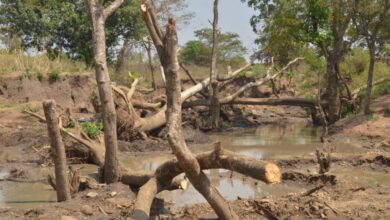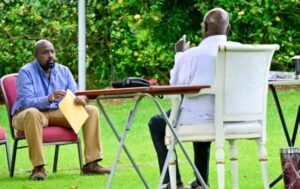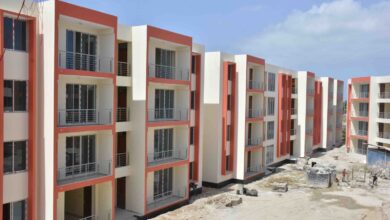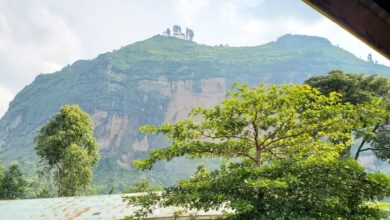The war on trees: what will neutralize the carbon emissions in the Tilenga oil and gas project area?
Worst of it all, the stuffs you tagged as, “wild.” Where is the nursery bed for Musisiye? Some of our indigenous trees, bushes, and grass actually don’t have known seeds.
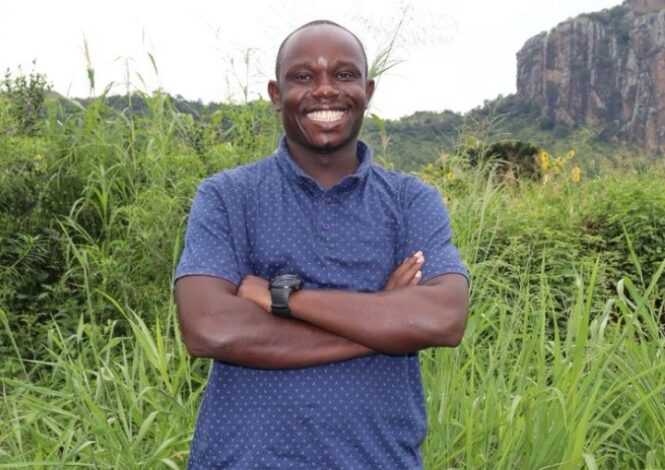
Op-Ed: Roots of felled old trees, some as old as 100 years or even more, lie lifeless side by side of the road as we drive through Budongo Forest Reserve.
The trees have been cut to make way for the expansion and tarmacking of the oil road that connects Masindi and Buliisa districts in mid-western Uganda. The sunrays coming through the remaining trees are very direct, and we can feel the heat.
Our eyes have been opened. The illusion of a thick forest has fallen. We can now see that the once impenetrable forest died a long time ago to make way for sugarcane plantations along the same road stretch. Kinyara Sugar Factory is located about 15 kilometers east of the forest reserve and has been a carbon emitter in the area for the last 50 years.
The destroyed Budongo Forest Reserve is shared by the three districts of Buliisa, Masindi, and Hoima. It is the only forest reserve in the Tilenga Oil and Gas project area that straddles Buliisa and Nwoya districts in the north of Lake Albert.
As you head to Buliisa town, heaps of firewood by the roadside welcome you. These are young trees cut from the bushes in the Bugungu WildLife Game Reserve, where locals pay rangers to have access to the bushes. Smoke from charcoal kilns can be seen building dark clouds in the skies. And in Buliisa Sub County, bare ground areas are what your eyes can see.
Trees and bushes have been cleared by charcoal burners. It is evident that the demand for wood fuel to meet the needs of the ever-increasing population in Buliisa district is responsible for the massive cutting of trees.
However, this destruction has not just started today, and we cannot entirely put it into wood fuel consumption, agriculture, or human settlement. It is an escalation of what has been happening since the discovery of commercial oil reserves was announced by the government of Uganda in 2006.
I will never forget when I first saw small cars eating bushes to create passages for field cars during the seismic surveys under Tullow Oil Uganda and Heritage. The compulsory and permanent acquisition of land for oil and gas infrastructural development has had a lion’s share of the destruction of vegetation cover in Buliisa district for the last 17 years.
Undocumented numbers of indigenous trees tagged by TotalEnergies Uganda and the government of Uganda as “wild trees” have been destroyed to construct roads, camps, well pads, borrow pits, and the Central Processing Facility (CPF). Yet more will be cut to construct the flow lines and the feeder pipelines. These trees are never compensated for or replanted elsewhere, and yet the indigenes derive a myriad of uses from them. They are never even thought about as potential carbon stock and sequestration sources for the future.
A colleague who is an environmental scientist in one of our WhatsApp groups this week challenged my Tilenga carbon figures that I put at 23 million metric tons for the next 25 years in my previous article on this website.
According to the Environmental Social Impact Assessment Report (ESIA), the project will emit 13 kilograms of carbon dioxide per barrel of oil. At its peak, Tilenga will produce 190,000 barrels of crude oil per day. He argued that calculations and conclusions on the carbon figures that shall be emitted to the ambient air by the Tilenga oil project depend on so many factors, including net gain and net loss programs (how many trees are cut and the amount of exhaust fumes the project is emitting vs. the number of trees or green cover you planted).
Unfortunately, there seems to be no ongoing tree planting initiative around the Tilenga Central Processing Facility (CPF). What I see sometimes is subcontractors giving out seedlings to locals, sometimes even in the dry season.
After undervaluing the land and paying peanuts in compensation, the oil developer still wants the locals to reserve part of their only remaining land to grow trees and compensate for their cooperation in the destruction of the vegetation cover. That is unacceptable.
Locals should plant trees to compensate for what they have destroyed for wood, fuel, and others. But TotalEnergies Uganda must act more responsibly, buy land or ask for the government’s land in Buliisa, and plant a forest as compensation for the trees they have destroyed and/or are about to destroy under the Tilenga Project.
TotalEnergies Uganda (TEPU) says there will be no routine flaring during normal operations and that a vapor recovery unit will be located at the Tilenga Central Processing Facility in Kasenyi village to process gases generated. They also talk about site decommissioning and restorations. Although these carbon mitigation measures are good to know, they collectively appear to be silent on the amount of carbon that will be controlled from being emitted into the ambient air.
Why I love figures is that figures don’t lie, but I know liars can figure out to lie. Put me on record: I have lived in Buliisa throughout my entire life, and I am still here. Site restoration sounds like hot air in my ears. You cannot restore the vegetation cover you didn’t document.
Worst of it all, the stuffs you tagged as, “wild.” Where is the nursery bed for Musisiye? Some of our indigenous trees, bushes, and grass actually don’t have known seeds. Like I have seen in a few places, what happens under the guise of restoration can be termed site demolition and leveling the ground.
I have read in the national news that in January this year TotalEnergies Uganda (TEPU) wrote to the Minister of Energy asking for a license to construct the Tilenga Liquefied Petroleum Gas Facility, which, if granted, would produce 80,000 tons of liquefied petroleum gas (LPG) per year. LPG is a versatile, low-carbon energy source that can be used for cooking as well as as an alternative transport fuel.
While combustion and conversion of gases will help abate the Tilenga carbon footprints, with the increasing population and the urbanization in Buliisa, which is directly linked to the Tilenga Project, we need trees more than ever to neutralize the carbon that will be directly emitted by the Tilenga Central Processing Facility and other infrastructural development in the area. As a matter of fact, the places that used to be tree reserves, like the River Sambye catchment area and other places we would categorically refer to as “mundala,” to mean in the wilderness, are now human settlement areas. It’s a tragedy of monumental proportion!
The author is Nelson Byaruhanga, an indigenous journalist, writer, and filmmaker.
Disclaimer: As UG Reports Media LTD, we welcome any opinion from anyone if it’s constructive for the development of Uganda. All the expressions and opinions in this write-up are not those of UG Reports Media Ltd. but of the author of the article.
Would you like to share your opinion with us? Please send it to this email: theugreports@gmail.com.



